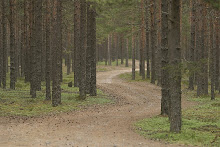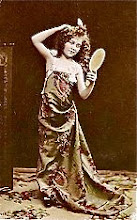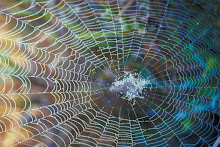I've decided to do a little investigating into the world of the most curious and intiguing Mr. Charles Lutwidge Dodgson! You know him. Everyone knows him. He is a revered children's book author who also wrote for adults as well, also a mathematician, logician, Anglican deacon, and photographer. You know him under his pen name or pseudonym of Lewis Carroll, of
Alice's Adventures in Wonderland reknown. Alice is having a resurgence of popularity right now, but here I wish to share with you something beyond his life, that is his marvelous and extraordinary photographs of children.
Charles L. Dodgson was born on January 27, 1832 in Daresbury, Cheshire, England. The Dodgson family males for generations were either army officers or Church of England clergymen. His father, also Charles, went to Christ Church, Oxford where he exhibited brilliance in mathematics which could have led to a promising academic career, but instead he chose to take holy orders and became a country parson. He perservered to instill his religious views in his children, of which there were eleven. Young Charles, in spite of his father's highly conservative influence developed an ambiguous relationship with his father and the Anglican church.

In January 1851, Charles went on to Oxford to attend his father's alma mater of Christ Church. He was only there two days when he was summoned back home because of his mother's death. He was exceptionally gifted and although he was often distracted from applying himself well, achievement came easily to him. His superb gifts won him a coveted Christ Church Mathematical Lectureship which he held for the next twenty-six years. The income was good but the work bored him. Inspite of that, he remained at Christ Church in various capacities until his death in 1898 at the age of 65.
From a young age, Charles wrote poetry and short stories which were published in various magazines of the day achieving him moderate success. Between 1854 and 1856 his work appeared in national publications and smaller magazines. In 1856 he published a romantic poem called "Solitude" for the first time under his pseudonym of Lewis Carroll.

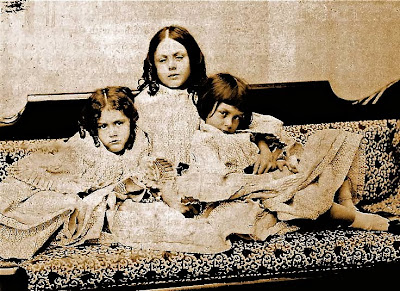
Also in 1856, the new dean for Christ Church, Henry Liddell, arrived with his young family. The family, especially Henry's wife Lorina, and her three daughters, Lorina, Edith and Alice Liddell, became very important to Charles and extremely influencial to his writing career. Many have speculated that Alice Liddell was the inspiration for Alice in Wonderland, but Charles later denied the correlation. It was very apparent that Charles's friendship with the Liddell family was a crucial part of his life in the late 1850's. He was fond of taking the children on rowing trips to nearby spots where he entertained them with stories he would make up for their enjoyment. It was in July 1862 that Charles invented the outline for his Alice adventures. Alice Liddell begged him to write it down for her which he did in 1864. It wasn't long before the manuscript hit the desk of the publisher Macmillan, and the rest is history. The book quickly became an overwhelming commercial success and Charles was soon famous around the world, but kept his post at Christ Church regardless. He continued to teach there until 1881 and then remained in residence until his death.

Charles had been groomed for the ordained ministry in the Anglican Church and was expected as a condition of his residency at Christ Church to take holy orders within four years of his earning his Master's Degree. However he delayed the process for some time but did finally take Deacon's orders in 1861. But one year later when he was to progress to Priestly orders Charles appealed to Dean Liddell for permission not to proceed. Normally that would have resulted in immediate expulsion but for unknown reasons the Dean allowed Charles to remain at Christ Church. It is not known why he rejected taking his Priestly orders.
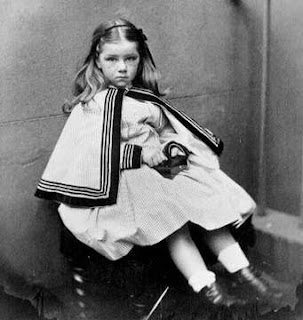_2.jpg)


In 1856 Charles took up the new art form of photography of which he soon excelled. He became a well known gentleman photographer finding the new art form presented him with entree into higher social circles. He photographed many notable and famous people of his era. Over 24 years Charles completely mastered the medium creating about 3,000 images of which fewer than 1,000 have survived to the present. Then in 1880 he abruptly discontinued photography without explanation.
Hallam Tennyson, son of Alfred Lord Tennyson
During his life Charles kept diaries. Of the total 13 diaries in his collection at least four volumes of text are missing covering the years 1853 until 1863 when he was 22 to 32 years of age. The pages were deliberately removed possibly by family members in the interest of preserving the family name. But this is just scholarly speculation. Dodgson did experience a break with the Liddell family in 1863 and much gossip has been passed down as to possible explanations. Charles did seem to have an obsessive fascination with the young Alice Liddell, photographing her many times, but to say anything more would be pure speculation. That has not stopped numerous scholars and writers of today from partaking in it.
Three photos of Alice Liddell


In modern interpretations of his life, Charles Dodgson is perceived as a possible pedophile. Biographers cite Charles's friendships with young girls, his seeming lack of interest in adult women and his photographs as evidence. They mostly assume although a pedophile, he was probably a repressed, celibate one. Charles insisted his fondness for photographing nude children was entirely aesthetic. I can say personally after looking at thousands of photographs of children of that time period in assembling my photo library, it was indeed the fashion of the time to photograph young children in the nude. Victorian morals perceived child nudity as essentially an expression of innocence and most photographers of the period made them as a matter of course. The practice was entirely mainstream. One cannot apply today's morals and fashion standards necessarily to 100 years ago when there were very different social and aesthetic tastes. I have many times found it necessary to exclude certain and numerous Victorian photos and even Christmas cards from my work and collection not just because they presented nude children, but were also extremely suggestive to the point that would not be acceptable by today's standards. Rather than no interest in adult women, some experts insist his diaries show a definite interest in women both married and unmarried. I think it is unfortunate that so much rampant speculation has tarnished the reputation of a beloved children's writer.
_2.jpg)
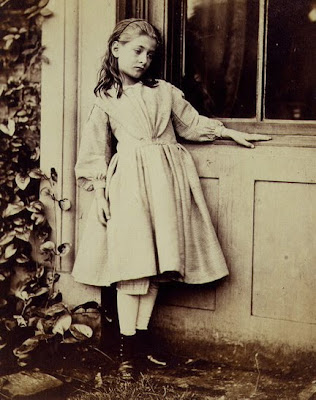_2.jpg)
_2.jpg)
To me Dodgson's photographs are easy to identify. His subjects are presented in a mostly unadorned simple manner and appear to be more natural and un-staged. In many instances there is almost a gothic sensibility and mood. His work is unlike any other photographer of the period that I have seen. I hope you enjoy these examples of his as much as I do!



